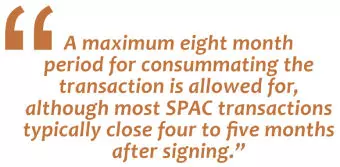- Home
- News
- Articles+
- Aerospace
- Artificial Intelligence
- Agriculture
- Alternate Dispute Resolution
- Arbitration & Mediation
- Banking and Finance
- Bankruptcy
- Book Review
- Bribery & Corruption
- Commercial Litigation
- Competition Law
- Conference Reports
- Consumer Products
- Contract
- Corporate Governance
- Corporate Law
- Covid-19
- Cryptocurrency
- Cybersecurity
- Data Protection
- Defence
- Digital Economy
- E-commerce
- Employment Law
- Energy and Natural Resources
- Entertainment and Sports Law
- Environmental Law
- Environmental, Social, and Governance
- Foreign Direct Investment
- Food and Beverage
- Gaming
- Health Care
- IBC Diaries
- In Focus
- Inclusion & Diversity
- Insurance Law
- Intellectual Property
- International Law
- IP & Tech Era
- Know the Law
- Labour Laws
- Law & Policy and Regulation
- Litigation
- Litigation Funding
- Manufacturing
- Mergers & Acquisitions
- NFTs
- Privacy
- Private Equity
- Project Finance
- Real Estate
- Risk and Compliance
- Student Corner
- Take On Board
- Tax
- Technology Media and Telecom
- Tributes
- Viewpoint
- Zoom In
- Law Firms
- In-House
- Rankings
- E-Magazine
- Legal Era TV
- Events
- Middle East
- Africa
- News
- Articles
- Aerospace
- Artificial Intelligence
- Agriculture
- Alternate Dispute Resolution
- Arbitration & Mediation
- Banking and Finance
- Bankruptcy
- Book Review
- Bribery & Corruption
- Commercial Litigation
- Competition Law
- Conference Reports
- Consumer Products
- Contract
- Corporate Governance
- Corporate Law
- Covid-19
- Cryptocurrency
- Cybersecurity
- Data Protection
- Defence
- Digital Economy
- E-commerce
- Employment Law
- Energy and Natural Resources
- Entertainment and Sports Law
- Environmental Law
- Environmental, Social, and Governance
- Foreign Direct Investment
- Food and Beverage
- Gaming
- Health Care
- IBC Diaries
- In Focus
- Inclusion & Diversity
- Insurance Law
- Intellectual Property
- International Law
- IP & Tech Era
- Know the Law
- Labour Laws
- Law & Policy and Regulation
- Litigation
- Litigation Funding
- Manufacturing
- Mergers & Acquisitions
- NFTs
- Privacy
- Private Equity
- Project Finance
- Real Estate
- Risk and Compliance
- Student Corner
- Take On Board
- Tax
- Technology Media and Telecom
- Tributes
- Viewpoint
- Zoom In
- Law Firms
- In-House
- Rankings
- E-Magazine
- Legal Era TV
- Events
- Middle East
- Africa

Australian de-SPAC transactions a new opportunity
Australian de-SPAC transactions a new opportunity

AUSTRALIAN DE-SPAC TRANSACTIONS A NEW OPPORTUNITY It is important however to understand the initial requirements and ongoing compliance obligations of listing on a relevant foreign exchange and the evolving regulatory and heightened investor scrutiny applicable to SPACs The inaugural Australian de-SPAC transaction has been announced, linking Australia into the worldwide SPAC phenomena for...
To Read the Full Story, Subscribe to Legal Era News
Access Exclusive Legal Era Stories, Editorial Insights, and Expert Opinion.
Already a subscriber? Sign in Now
AUSTRALIAN DE-SPAC TRANSACTIONS A NEW OPPORTUNITY
It is important however to understand the initial requirements and ongoing compliance obligations of listing on a relevant foreign exchange and the evolving regulatory and heightened investor scrutiny applicable to SPACs
The inaugural Australian de-SPAC transaction has been announced, linking Australia into the worldwide SPAC phenomena for the first time. With a large number of SPACs looking for investment opportunities, Australian companies are increasingly becoming targets for such de-SPAC transactions.

Nature of a de-SPAC transaction
A SPAC (special purpose acquisition company) involves an initial public offering on an overseas exchange.
The IPO offer document typically states that it is looking for an acquisition target in a particular industry, market or geographic region.
A de-SPAC transaction involves a SPAC acquiring a company by a merger or other acquisition to effectively list it on that exchange.
The timeframe for a SPAC to consummate a de-SPAC transaction is limited. If a SPAC does not complete an acquisition within (at most) 24 months, it must return the capital raised.
The sponsor of the SPAC funds the offering expenses and receives sponsor shares and sponsor warrants in return. The sponsor shares typically represent around 20% of the SPAC shares and are issued at a nominal value. The sponsor warrants provide a right to obtain further shares at a fixed price in the future.
A SPAC is required to put the proceeds of its initial public offering into a trust account to pay for the de-SPAC transaction. However, once a de-SPAC transaction is approved by the SPAC shareholders, each SPAC shareholder, whether it voted for or against the de-SPAC transaction, has the right to redeem its investment before the de-SPAC transaction closes.
To address the potential funding outflow, the SPAC sponsor usually seeks a commitment for a PIPE (private investment in public equity) investment by private investors, in order to ensure that the SPAC will have sufficient funds to acquire the target notwithstanding any redemptions.
Recent SPAC developments
2020 was a record-breaking year for SPAC listings driven by high liquidity and investor enthusiasm. Whilst this has tapered during 2021, SPACs continue to represent a major source of funds looking for a home to invest in. Australia is seeing recent interest in this regard.
Baker McKenzie has been involved in a number of SPAC/de-SPAC transactions and client facing SPAC developments including:
• We recently jointly conducted an Asia Pacific Client Webinar focusing on our experiences arising from SPAC and de-SPAC transactions around the world.
• We have produced the inaugural Baker McKenzie Global SPACs Guide, which sets out a comparison of some of the features and requirements applicable to SPACs and de-SPACs in a number of jurisdictions including Australia.
• We have prepared the Baker McKenzie publication entitled SPACs: Challenges and Opportunities, which looks at the various stages of the SPAC process and offers tips and insights on the various challenges and opportunities that may be presented during that journey.
• We have prepared the Baker McKenzie publication entitled de-SPAC Transactions: Considerations and Risks which looks at the key factors to consider in, and the risks related to, a de-SPAC transaction.
Key SPAC experience
Baker McKenzie has acted on the following key SPAC matters, amongst others:
• Aurora Acquisition Corp on its USD 6.9 billion de-SPAC with the digital home ownership company Better, following our advising on its SPAC listing on Nasdaq
• JHD Holdings, an innovative merchant enablement services platform in China, in its USD 1 billion de-SPAC with East Stone Acquisition Corporation listed on Nasdaq
• Videocon d2h, one of India's largest pay TV providers, on its USD 325 million de-SPAC with Silver Eagle listed on Nasdaq
• BYTE Acquisition Corp's risk capital shareholders/sponsors on its USD 300 million SPAC listing on Nasdaq targeting the Israeli technology sector
• Aligro Planet Acquisition Company AB on its SEK 1 billion SPAC listing on Nasdaq Stockholm
• tbd30 AB on its SEK 800 million listing on Nasdaq Stockholm
Australian de-SPAC focus
ASX does not allow a SPAC listing, as this offends its "no cash box" rule. ASX is unlikely to change its position in the near term. Accordingly, the focus in Australia is on de-SPAC transactions, under which an Australian entity (either privately owned or listed) is combined with an overseas listed SPAC and becomes listed on the overseas exchange.

Most SPACs we have been involved in have listed on Nasdaq and the New York Stock Exchange. In Asia Pacific, Malaysia and South Korea have had SPAC regimes for about 10 years. Singapore has recently announced it will allow SPAC listings in light of growing interest within Asia Pacific. Hong Kong is contemplating the same. Stock exchanges in Europe are emerging as alternative listing venues, and we have been involved in various SPAC listings on Nasdaq Stockholm and Euronext Amsterdam.
First Australian de-SPAC
The first Australian de-SPAC transaction involving Decarbonization Plus Acquisition Corporation II is illustrative. It involves the Australian shareholder in a substantial privately owned company entering into a Business Combination Agreement with a SPAC listed on Nasdaq. It involves the establishment of a new Australian public company acquiring all of the shares in the Australian company in return for the issue of shares. The new Australian public company is becoming the Nasdaq listed entity. It intends to use the substantial SPAC funds to finance its growth.
This transaction involves significant documentation, processes and requirements in order for the de-SPAC to be implemented. The processes include obtaining FIRB approval, preparing a registration statement that satisfies the US Securities and Exchange Commission disclosure requirements, the SPAC shareholders approving the transaction, offering rights to the initial SPAC investors to exit, and Australian shareholders entering into six-month lock-up arrangements for their shares received in the SPAC. A maximum eight-month period for consummating the transaction is allowed for, although most SPAC transactions typically close four to five months after signing.
Clearly, there would be further requirements if the Australian company had been ASX listed. If so, it might have involved shareholders approving a scheme of arrangement. This would require that Australian shareholders be provided with similar information as contained in the US registration statement or proxy statement together with further specific disclosures required by the Corporations Act, including the recommendations of Australian company directors and independent experts' report confirming that the transaction is in the best interests of its shareholders.
Australian themes
From the perspective of an Australian company, a de-SPAC transaction can offer an attractive alternative to a traditional IPO or M&A transaction. Going public by a sale to a SPAC may be faster than a traditional IPO route. In addition, Australian SPAC targets may be able to achieve greater certainty on pricing than would be the case with traditional IPO underwriting pricing mechanisms.
However, Australian companies need to realistically understand that listing through a SPAC involves a similar amount of work as an IPO, together with additional regulatory requirements in the listing jurisdiction. For Australian companies contemplating a transaction with a US SPAC, there will need to be a SEC approved US registration statement/proxy statement, and associated due diligence conducted to a standard necessary for adequate public disclosure.
In addition to the preparation of audited financial statements compliant with US GAAP, it would also be necessary to implement internal controls and financial reporting procedures, disclosure processes and corporate governance and other regulatory policies applicable to US reporting companies. Taxation aspects would need to be carefully considered.
Furthermore, the increase in de-SPAC transactions, particularly in the United States, has led to enhanced regulatory scrutiny over these transactions and made them a prime target for shareholder litigation. A key area of exposure is financial projections which typically form part of de-SPAC transactions.
Conclusion
De-SPAC transactions can present an attractive opportunity for Australian companies looking to scale up or PE or founders looking for an exit, particularly in the technology and fintech space which are readily understandable in an overseas context.
However, it is important to understand the initial requirements and ongoing compliance obligations of listing on a relevant foreign exchange and the evolving regulatory and heightened investor scrutiny applicable to SPACs. An Australian de-SPAC transaction is suitable for some companies but not for others.


